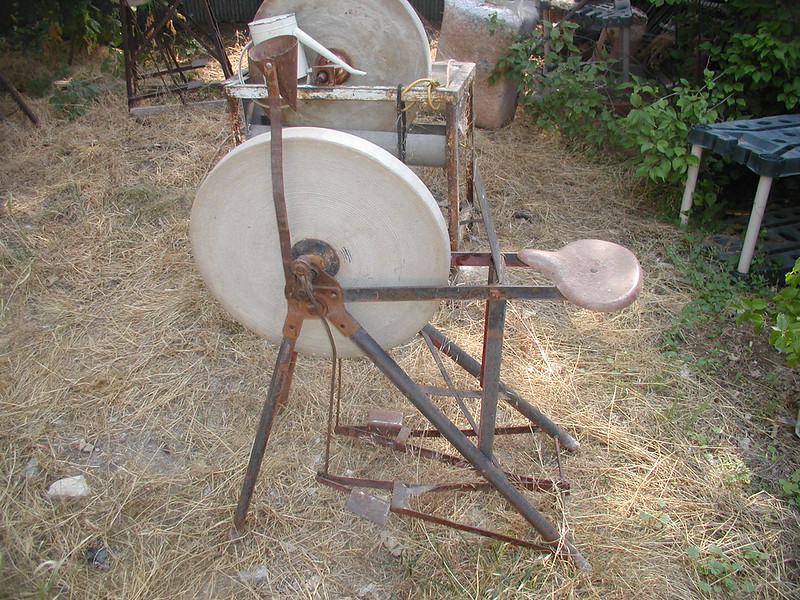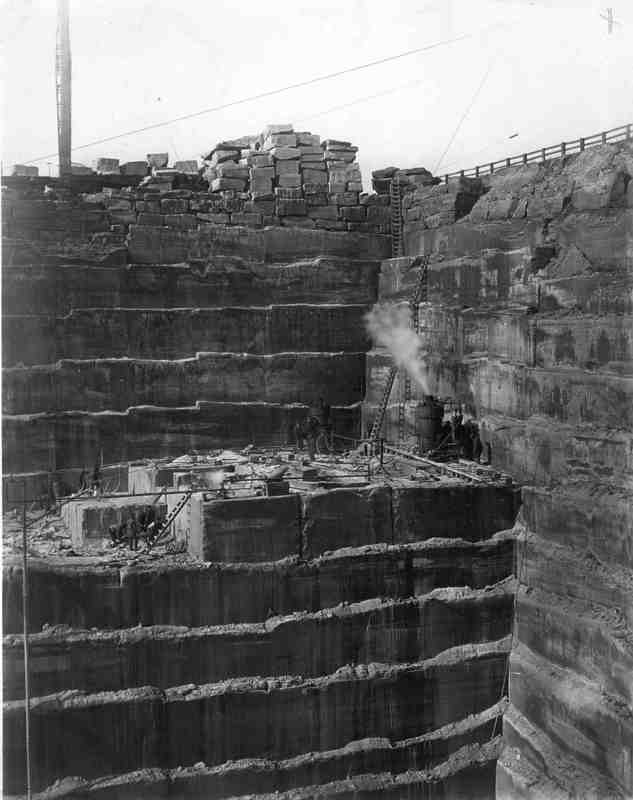I have one like this from their competitor, Cleveland Quarries (CQ). I thought it was older until I found the patent dated 1940:
Some information from an earlier thread:
This grindstone is made of "Berea Sandstone" from Ohio. "Berea Sandstone is an excellent building stone due to the composition of grains of Quartz bonded by Silica. The extreme hardness of the Quartz grains of Berea Sandstone enables it to preserve an abrasive non-slip surface... The silica bond does not deteriorate with time, exposure to water or temperature change and so prolongs to longevity of the stone."
from
http://www.clevelandquarries.com/technical-data
Cleveland Quarries Company was formed in
1929, consolidating the operations of two other companies.
In the
1940s, Cleveland Quarries sold household grindstones through its Berea Abrasives division, with many model including:
The Harvester
The Streamliner
The Sterling
The Norka
The
Bi-Treadle
The Harvest King
The Eureka
The Samson
The Little Giant
The Hercules
The Keystone
The Shipstone
The Family Grindstone
Up until the unsuccessful Bay of Pigs invasion of Cuba in
1961, Cuba had been one of the largest importers of grindstones, and after the trade embargo, the Cleveland Quarries Company's grindstone business suffered. "...most agree that
the [sandstone grindstone] industry died in the 1960s."
Source:
Sandstone Center of the World, by James A. Hieb, 2007
"This image from 1921 shows the scale of Quarry No. 7. Workers get to their workstation via ladders. Stacks of stone already cut from the quarry can be seen on the top left."
text and photo from ClevelandHistorical.org
https://clevelandhistorical.org/files/show/2241#.WYugplWGPIU









